Sustainable Website Design 2025: A Guide to Reducing Environmental Impact

Learn how to design an eco-friendly website in 2025. From choosing green hosting, optimizing images, to efficient code, minimize your carbon footprint.
Why is Sustainable Web Design Important?

In the digital age, the internet plays an indispensable role in our daily lives. However, few people realize that this online activity has a significant environmental impact. Data centers, transmission networks, and user devices consume vast amounts of electricity, leading to greenhouse gas emissions, contributing to climate change. According to recent statistics, the internet is responsible for about 3.7% of global greenhouse gas emissions, equivalent to the aviation industry.
Sustainable web design is an approach to mitigating this negative impact. It focuses on creating websites that are efficient, energy-saving, and environmentally friendly. This not only helps protect the planet but also brings many other benefits, including reduced operating costs, improved user experience, and enhanced brand reputation.
Elements of a Sustainable Website

A sustainable website is built on many factors, from choosing hosting to optimizing content. Here are some important factors to consider:
- Green Hosting: Choose hosting providers that use renewable energy or have carbon offset programs. Green hosting is the foundation for a sustainable website.
- Image Optimization: Images often account for the majority of a website's size. Using modern image formats such as WebP and AVIF can significantly reduce file size without sacrificing quality. Compressing images and using appropriately sized images are also important.
- Efficient Code: Writing clean, concise, and optimized code is a key factor. Minimize the use of unnecessary JavaScript, optimize CSS, and use lazy loading techniques to only load resources when needed.
- Minimalist Design: Minimalist design not only brings a modern look but also helps reduce the load on the website. Eliminate unnecessary elements, focus on the main content, and use colors and images sparingly.
- Economical Font Selection: Some fonts consume more resources than others. Choose lightweight fonts and use them consistently throughout the website.
Tools and Resources to Measure and Improve Sustainability

To assess and improve the sustainability of your website, there are many useful tools and resources. One of them is the Website Carbon Calculator, which helps estimate the amount of carbon your website generates each year. In addition, you can use tools like Google PageSpeed Insights to analyze website performance and identify issues to improve. Learn more about the Web Content Accessibility Guidelines (WCAG) to ensure your website is user-friendly and resource-efficient.
Case Study

Many companies have successfully implemented sustainable web design and achieved impressive results. For example, an e-commerce company reduced its carbon footprint by 30% by optimizing images and using green hosting. A non-profit organization improved page load speeds by 50% by simplifying the design and optimizing the code. These cases show that sustainable web design is not only a social responsibility but also a smart business strategy.
Sustainable Web Design Trends in 2025

In 2025, sustainable web design will become a mainstream trend. Web designers and developers will focus on creating ultra-lightweight websites, using new technologies such as edge computing to reduce the load on data centers, and applying regenerative design methods to create websites that not only neutralize carbon but also contribute to environmental restoration.
SEO for a Sustainable Website

Sustainable web design is not only good for the environment but also beneficial for SEO. Google and other search engines increasingly prioritize websites that are fast, user-friendly, and have high-quality content. By optimizing your website to reduce its carbon footprint, you also improve search rankings and attract more customers.
Some SEO strategies for a sustainable website include:
- Optimize page load speed: Use Google PageSpeed Insights to identify and fix page load speed issues.
- Create high-quality content: High-quality content not only attracts users but also helps your website get higher ratings from search engines.
- Build quality links: Links from other reputable websites can help improve your search ranking.
- Use relevant keywords: Use keywords such as 'sustainable web design', 'green web design', 'reduce carbon footprint website', 'green hosting', 'optimize website images', 'environmentally friendly website' in your content and meta tags.
To have a sustainable website, you can turn to experts. Vinawebapp.com, a professional website design company in Da Nang, Vietnam, provides environmentally friendly website design services to help you reduce your carbon footprint and improve website performance. They understand the importance of combining aesthetics and sustainability. Vinawebapp.com can help you build a website that is not only beautiful but also responsible to the environment. Contact them for advice and support.
In the process of building a sustainable website, choosing the right technology is very important. Consider using lightweight JavaScript frameworks and libraries, limit the use of unnecessary plugins, and always update your software to ensure security and optimal performance. This not only reduces the load on the server but also improves the user experience.
In addition, focus on educating users about the importance of sustainable web design. Add a page about sustainability to your website and share information about your efforts to reduce your carbon footprint. This can help you attract environmentally conscious customers and build a responsible brand.
Finally, remember that sustainable web design is an ongoing process. Regularly measure and evaluate your website's performance, look for opportunities to improve, and update the latest technologies and methods. With effort and commitment, you can create a website that is not only beautiful and effective but also contributes to a more sustainable future. Remember, choosing green hosting, optimizing images (using WebP, AVIF), efficient code (reducing unnecessary JavaScript), minimalist design, and choosing energy-saving fonts are important steps.
Conclusion

Sustainable web design is not just a passing trend but a necessity in the context of increasingly severe climate change. By applying the principles and techniques of sustainable web design, we can minimize the negative impact of the internet on the environment, while improving the user experience and enhancing brand reputation. Let's work together to build a greener and more sustainable digital future.

